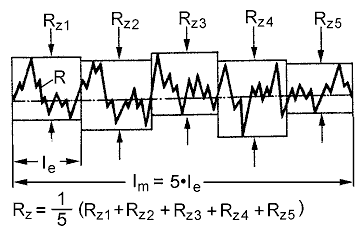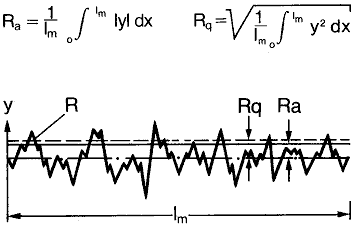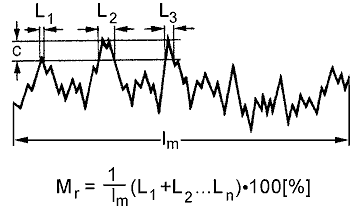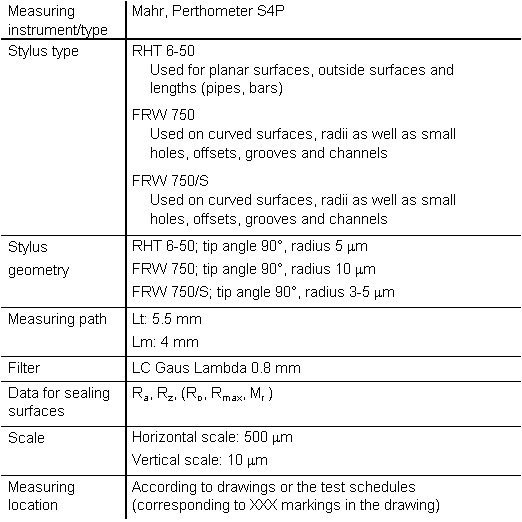10.5.4 Surfaces
10.5.4.1 Definitions
The surfaces of ceramic materials in most
cases do not display regular structures, but contain profile
deviations which can be classified into roughness, waviness
and shape. Important data for ceramic parts are:
Ra =
mean roughness figure,
Rz = roughness depth,
Mr = material ratio, formerly
: tp = bearing area.
The average roughness depth Rz
is the mean value of 5 individual roughness depths obtained
from consecutive separate samples of the roughness profile.
The extrema within each of the sampling lengths are summed
and the total range divided by the number of the profile's
sampling lengths.

Figure 214: Calculation of the roughness
depth Rz
The average roughness Ra is the computed
average of all deviations of the roughness profile from the
median line over the defined length. Ra theoretically corresponds
to the distance between several lines when the peaks above
the median and valleys below the median are converted into
rectangles of equal size.

Figure 215: Calculation of the average roughness
value Ra
The material ratio Mr (formerly: the bearing
area tp) is the ratio of the load bearing surface area (at
a given intersection line) to the entire area under consideration
(over the reference path) in %.

Figure 216: Calculating the material ratio
Mr
When using optical methods, Mr
is defined as a ratio of areas.
Mr = (area
down to a defined depth) / (total area)
Although the optical method is not standardised, it is often
used since it is possible to measure very quickly and with
high precision.
The above mentioned parameters are defined in DIN EN ISO 1302.
In order for the manufacturer and the customer to be able
to compare surface measurement data, it is important that
measurements are made under identical conditions. The specifications
affect the tracing stylus instrument, the stylus, the stylus
geometry, the measuring length, filters, instrument and instrument
settings as well as the surface parameters used. Examples
with fundamental conditions are listed in Table 34.

Table 34: Example of the specification of measurement
conditions
The following examples of surfaces (see p. 234 f.), material
ratios (see p. 236) and surface profiles (see p. 237 f.) will
provide an impression of the characteristics of ceramics surfaces.
|

